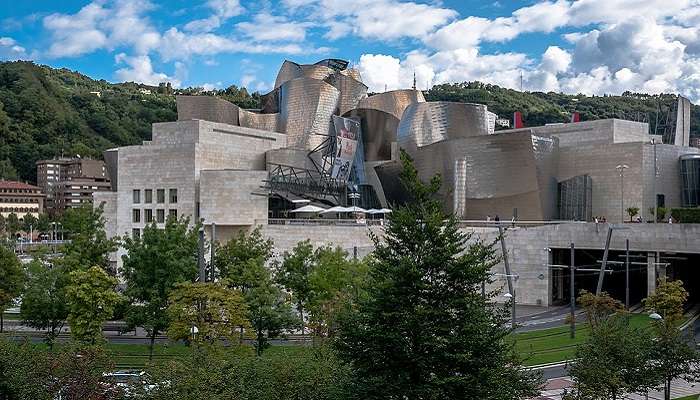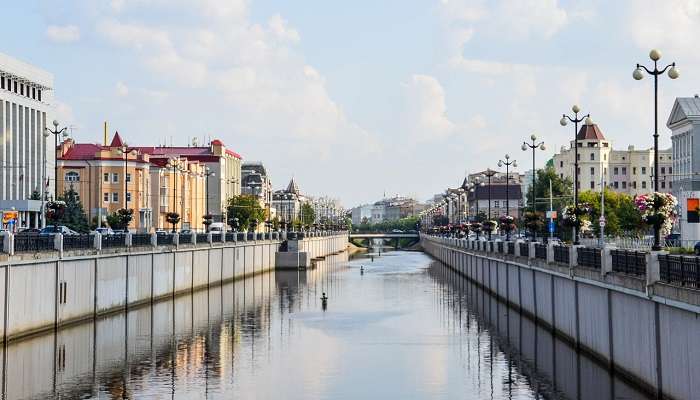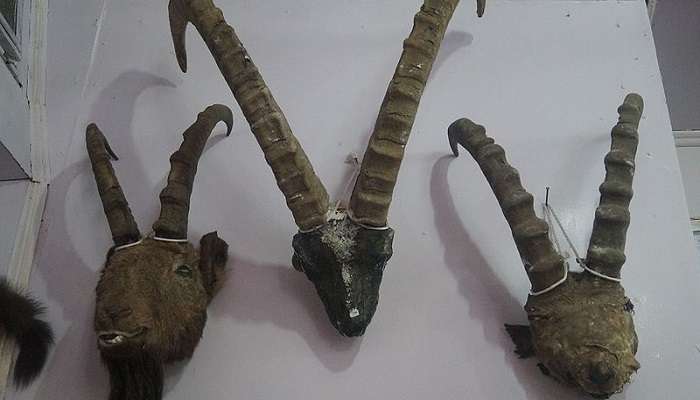Your Guide To Explore Hermitage Museum In Saint Petersburg
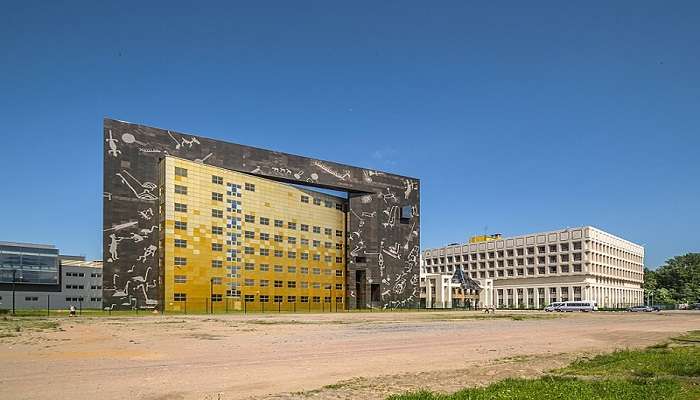
Nestled along the banks of the Neva River in St. Petersburg, Russia, the Hermitage Museum stands as a testament to human creativity and cultural heritage. This sprawling complex, with its iconic mint-green facade, houses one of the world’s largest and most prestigious collections of art and antiquities. Founded in 1764 by Catherine the Great, the Hermitage has grown from a private royal collection into a public institution of global significance. With over three million items spanning prehistory to the modern era, the museum offers visitors an unparalleled journey through art history, showcasing masterpieces from Da Vinci, Rembrandt, and Picasso alongside ancient artefacts and imperial treasures.
About Hermitage Museum
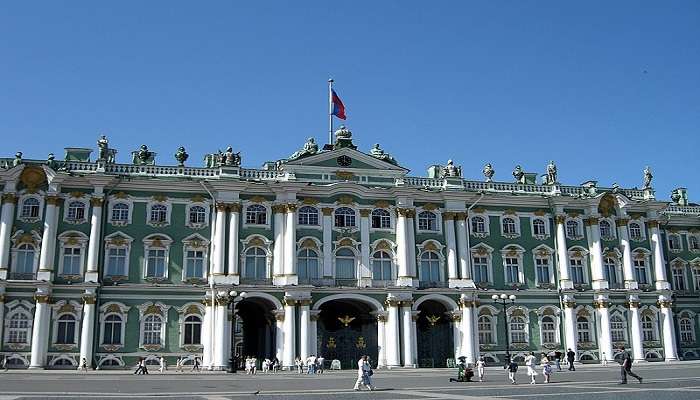
The State Hermitage Museum is one of the largest museums in the world and is situated in Saint Petersburg, Russia. Established in 1764 by Empress Catherine the Great, it has a stock of over three million items, including art, culture, and history.
The museum complex is located in six buildings on the Palace Embankment, the Winter Palace being the most famous one. The Hermitage features paintings, sculptures, and numismatic items, among other artefacts, as some of its outstanding collections. This museum has been operational since 1852 and is among the most popular tourist attractions for art and history lovers.
Also Read: Things To Do In Saint Petersburg
History Of Hermitage Museum
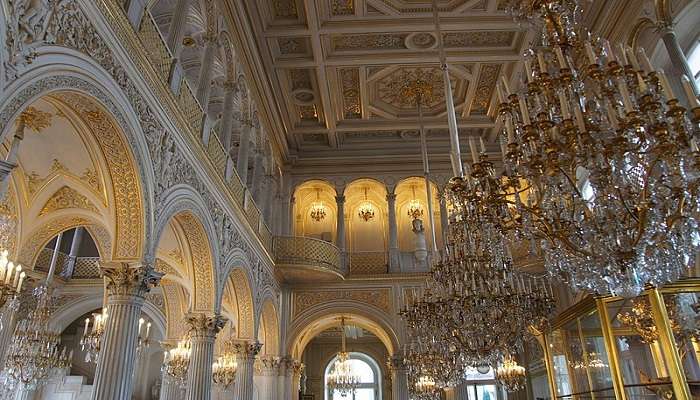
The Hermitage Museum of St. Petersburg, Russia, was founded in 1764 when Empress Catherine the Great bought paintings from a Berlin merchant, Johann Ernst Gotzkowsky. She was initially intended for Frederick II of Prussia; this collection consisted of 225 or 317 paintings—according to different sources—by such masters as Rembrandt, Rubens and others, which formed the basis for one of the largest art museums in the world.
Catherine the Great hired an architect named Yury Felten to construct a new palace building, which was later known as Small Hermitage. In time, the collection expanded greatly, and thus, more additions were made to it, the Large Hermitage or Old Hermitage. At the time of Catherine’s death, the museum had 4 thousand paintings, thousands of books, engraved gems, and numerous other items.
Even if there were some problems during the years, like selling the artworks in the 1920s and the damage during the Siege of Leningrad in World War II, the Hermitage remains a unique cultural value. Today, it remains one of the world’s largest and most renowned museums, with a stock of millions of pieces, including paintings which were concealed even from the public until the collapse of the Soviet Union.
Collection At Hermitage Museum
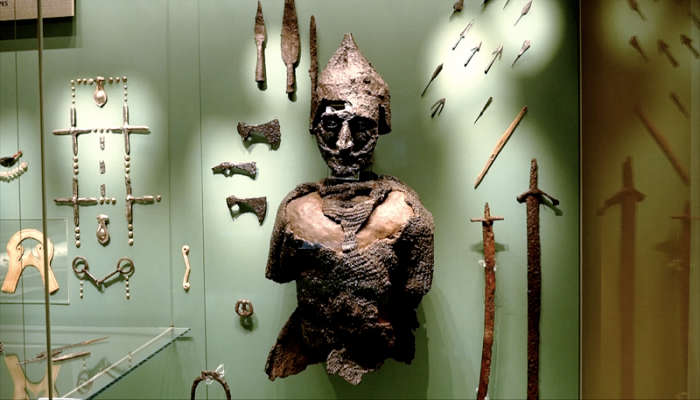
The Hermitage Museum boasts an impressive collection of over three million items. Founded in 1764 by Empress Catherine the Great, the museum’s collection includes:
Italian Renaissance Masterpieces: The Old and New Hermitage buildings have examples of Italian Renaissance masters such as Titian, Giorgione, Raphael, etc. It also includes the Benois Madonna and Madonna Litta that Leonardo da Vinci or his students painted.
Dutch Golden Age and Flemish Baroque: With over 700 paintings and sculptures from 17th-century Dutch and Flemish masters, such as Rembrandt, Van Dyck and Rubens, the New Hermitage’s southern façade and the western wing are home to the museum.
French Neoclassical to Post-Impressionist Art: The fourth floor of the General Staff Building contains the art of France from Neoclassicism to Post-Impressionism and such artists as Monet, Renoir, Van Gogh, and Gauguin.
German, Swiss, British, and French Fine Art: German and French paintings from the 16th to the 18th century by such masters as Poussin, Lorrain, and Watteau, and British paintings from the 16th to the 19th centuries by Gainsborough, Reynolds, etc., are best viewed from the southern front of the Winter Palace.
Knights’ Hall: A highlight for those interested in medieval and Renaissance warfare, the Knight’s Hall in the New Hermitage displays a collection of Western European arms and armour from the 15th to 17th centuries.
Egyptian Hall: The Egyptian Hall, established in 1940, displays the museum’s Egyptian collection dating back to 1852, including the Castiglione Collection, offering insight into ancient Egyptian civilisation.
Related Post: Saint Petersburg In June
Entrance Fees And Timings

The Hermitage Museum’s entrance fees are structured to accommodate different visitor preferences. The main museum complex and its branches have a general admission fee of 800 RUB, while entry to a single branch, such as the Menshikov Palace or the Imperial Porcelain Factory, costs 300 RUB.
The museum operates on a varied schedule: it is open from 10:30 AM to 6:00 PM on Tuesdays, Thursdays, Saturdays, and Sundays and from 10:30 AM to 9:00 PM on Wednesdays and Fridays. The museum remains closed on Mondays.
How To Reach?
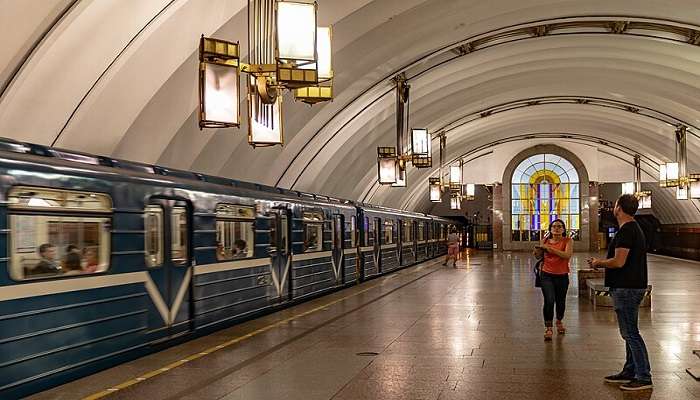
There are several convenient options for reaching the Hermitage Museum in Saint Petersburg, depending on your preference for public transport, walking, or private hire. Here’s a detailed guide on how to get there:
By Metro: Admiralteyskaya Station is the closest metro station to the Hermitage Museum. After exiting the station, it’s approximately a 10-minute walk to the museum. Follow signs towards Nevsky Prospekt and Palace Square, or use a map app to navigate.
By Bus: Some of the bus routes are as follows: The bus routes are convenient, and the majority of them have bus stops close to the Hermitage Museum. There are bus lines 7, 10, 24, and 191 with the stop named “Dvortsovaya Ploshchad”, which is located directly at the area of the museum. If you alight at this stop, you will see the museum right ahead of you when you get down.
By Tram: Trams are likewise accessible and valuable for getting to the Withdrawal. Tram routes 1, 7 and 10 likewise have their stops near the historic centre, with the closest one being “Dvortsovaya Ploshchad”, which is a couple of moments’ stroll from the entry.
By Taxi: Taxis are readily available in the entire region of Saint Petersburg. You can hail a cab from the street, or you can request one through your mobile phone. Just give the address Palace Square 2, St Petersburg 198205, Russia to the driver, and he will take you directly to the museum.
You May Also Like To Read: Places To Visit In St Petersburg
The Hermitage Museum is a great example of human creativity and cultural preservation. It has a huge collection of art from different time periods, offering visitors a unique journey through art history. From ancient artefacts to Renaissance masterpieces and more, the Hermitage impresses with its variety and beauty. If you’ve seen its wonders in pictures, why not visit and experience them in person? Book your trip to Russia today and Enjoy the stunning beauty of the Hermitage Museum. Let the inspiring artworks spark your imagination and create lasting memories.
For our editorial codes of conduct and copyright disclaimer, please click here.
Cover Image Credit :Florstein for Wikimedia Commons
Frequently Asked Questions About Hermitage Museum
Why is the Hermitage Museum famous?
The Hermitage Museum is famous for its extensive collection of over 3 million items, including works by Rembrandt, Picasso, and Matisse. Established by Catherine the Great in 1764, it is one of the world's oldest and largest museums.
Is the Hermitage the largest museum in the world?
No, the Hermitage is the second-largest museum in the world, covering 719,480 square feet with over 3 million items. The Louvre in Paris is the largest, surpassing the Hermitage in size.
Is the Hermitage Museum worth visiting?
Yes! The Hermitage offers an extraordinary collection of art, stunning architecture, and cultural experiences, featuring works from ancient civilisations to modern masterpieces, making it an essential stop in St. Petersburg.
Is the Hermitage bigger than the Louvre?
No, the Louvre is larger than the Hermitage. The Louvre covers 782,910 square feet, while the Hermitage spans 719,480 square feet. Both museums rank among the largest and most prestigious globally.
Can you take pictures inside the Hermitage?
Yes, photography is allowed inside the Hermitage, but flash is prohibited. Some exhibits may have specific restrictions, so it's important to check the museum's photography policies during your visit.
People Also Read:
Karen Blixen Museum Lamu Museum Museum Of Siam

With a passion for exploring and travelling to the roads long forgotten, experience the world through enthralling stories and adventures. Join me as I share my experiences at some of the world’s most popular tourist destinations and quench that pestering curiosity with something exciting!


